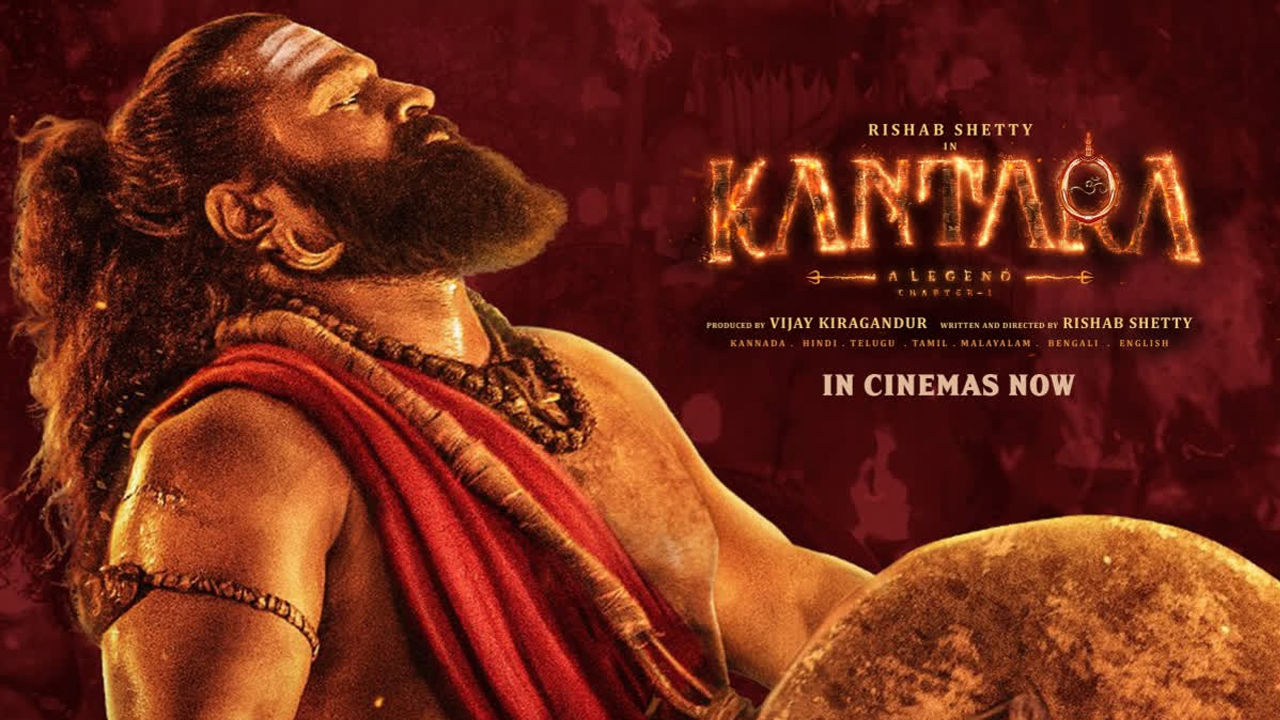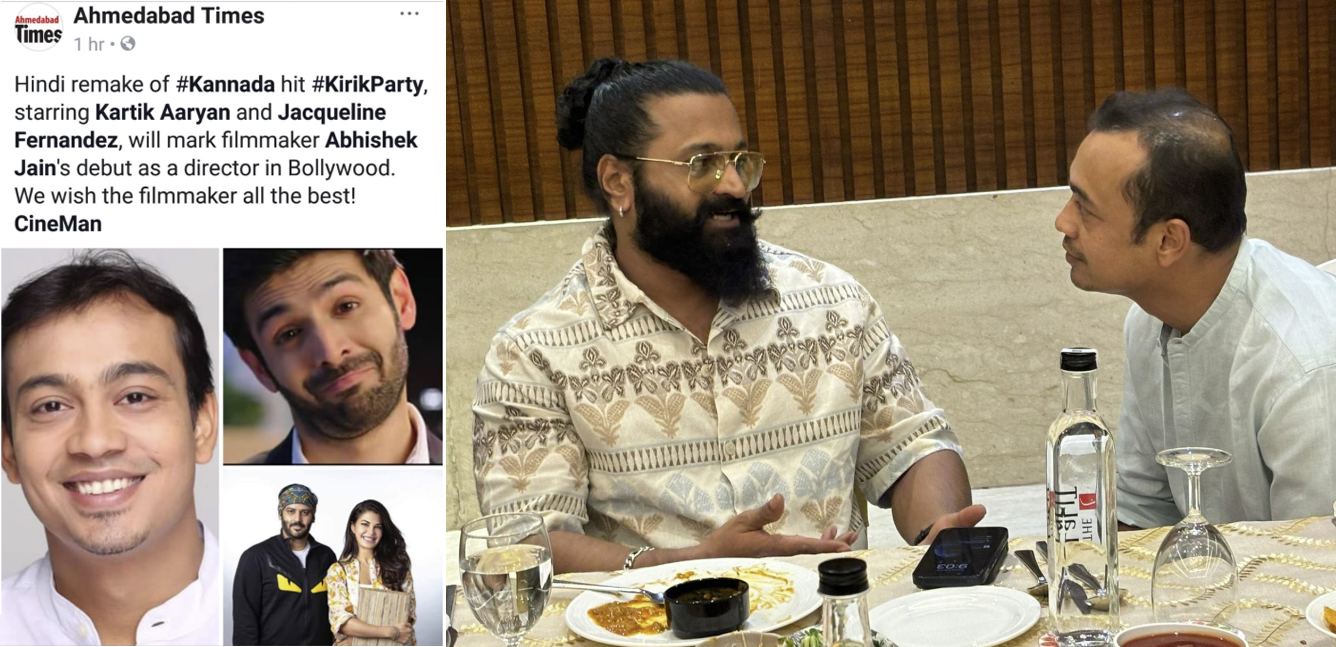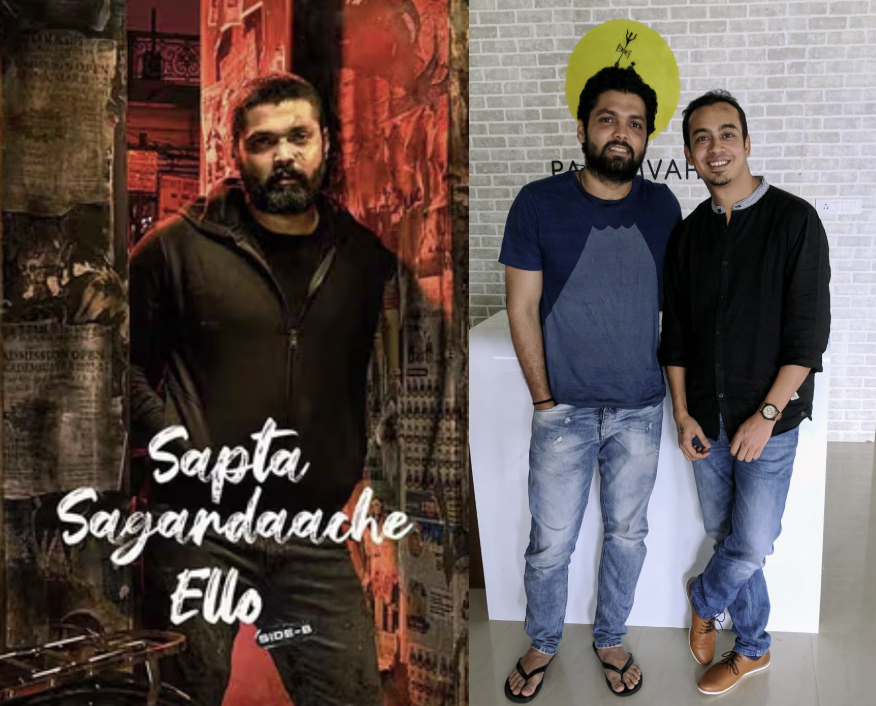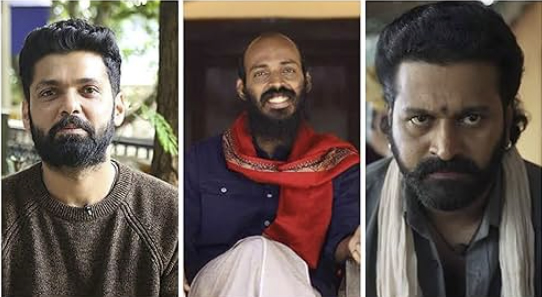
In my personal opinion, this is a far more complex situation than it appears. We might know all the secrets, but somehow the recipe refuses to come together. And strangely, there’s no one person to blame — it’s a collective learning, or perhaps, a collective feedback or call it a collective failure.
Also, my thoughts aren’t limited to the recently released Kantara chapter 1, but to the first one — the storm that Rishab Shetty created when he turned a deeply local folklore into a universal cinematic experience, and the wonderful films from the last 10 years or slightly more. My personal favorites being Saptasagardache Ello Sides A&B and Charlie 777.
The reason I’m using Kannada films as a sample study is because their industry is, in many ways, closest to ours — not in scale or language, but in structure, temperament, and cultural ethos.
I’ve witnessed that world up close. Years ago, I was about to remake Paramvah studio-backed Rishab Shetty 's directorial- Rakshit Shetty starrer and Rashmika Mandanna debut Kirik Party in Hindi, starring Kartik Aryan and Jacqueline Fernandez— and in that process, I discovered not just a film, but a movement.


Their cinema today — from Ulidavaru Kandanthe to Kantara, 777 Charlie, KGF, or Saptasagardache Ello — has become a case study in rooted storytelling meeting modern ambition.
So what makes them tick? And what can Gujarati cinema learn from it? Here’s my take — as a director and producer of Gujarati films and series.
A filmmaker is nothing without his audience. But rarely does one get a ready-made audience that aligns with their creative choices. You have to build it. You have to nurture it. You have to walk with them. This, to me, is a karmic process.What you sow is what you reap. What you create is what you attract. Filmmakers like Rakshit, Prashanth Neel and Rishab didn’t chase an audience — they cultivated one. They didn’t cater to taste; they shaped it. They held their audience’s hand through every film — from Simple Agi Ondh Love Story to Ulidavaru Kandanthe, from Kirik Party to 777 Charlie and KGF to Kantara. Each film wasn’t just a product; it was a step in evolving the audience’s cinematic world.
Think of it like raising a child. You don’t hand them the world on day one; you guide them, expose them to beauty, complexity, and emotion — until one day, they can see what you see or what you wish to show.
Over the years, Gujarati cinema, too, has built a loyal audience base. But we often confuse familiarity with loyalty. We play safe, assuming that comfort will keep them coming back. Instead, what they crave — though they may not always articulate it — is evolution, something different, relevant and relatable, something from their own roots.
The bottom line is, we have to trust them to grow with us. Because if we keep underestimating them, they will eventually outgrow us.
Every filmmaker begins their journey with fearlessness. But somewhere along the road — between budgets, approvals, reviews, and numbers — that fire ceases. And once you lose that, everything else becomes negotiation. The Kannada new wave thrived on the back of unfiltered fearlessness. Rakshit Shetty made Ulidavaru Kandanthe, a non-linear noir with broken narrative and raw sound design — at a time when everyone else was making glossy entertainers. Rishab Shetty took Kantara — a film blending myth, folklore, socio-politics, and divine possession — and turned it into a mass phenomenon without diluting its essence. Prashanth Neel, with Ugramm and later KGF, built a mythic world with larger-than-life emotion, not borrowed from Bollywood but born out of Kannada cinema’s grassroots masculinity. Their choices defined their voices.
Gujarati filmmakers often begin fearlessly but end up defending practicality. But creative courage is a long game — it doesn’t yield instantly, but it compounds. You take the right risks long enough, and the audience learns to reward you for it. Fearlessness is not about making “big” films. It’s about making honest films. Because honesty, when amplified with craft, can move mountains.
This is where the real magic happens — and also where we, as an industry, have the most to learn. Fraternity is not about attending premieres or posting polite compliments online. It’s about creating a force field — a culture of support, collaboration, and constructive competition.
Look at Kannada cinema: Rishab Shetty, Rakshit Shetty, Prashanth Neel, Raj B. Shetty, Hemanth Rao and the teams at Hombale Films or Paramvah Studios — they are not rivals; they are co-conspirators/ co-creators. They share technicians, read each other’s scripts, advise on edits, invest in each other’s projects, and even act in each other’s films. It’s a creative ecosystem that runs on trust. They understood early that individual glory is temporary, but collective rise is permanent. When Kantara worked, it pulled up the entire industry’s credibility. When KGF exploded, it opened doors for 777 Charlie. When Saptasagardache Ello got critical acclaim, it reinforced the industry’s diversity. That’s fraternity — not just surviving the system, but building your own parallel one.

In Gujarat, we need that — not as a formality but as a philosophy.
Regular meetings, script circles, shared resources, mentorships, constructive criticism— and most importantly, candid conversations without ego. A creative community must be a place where filmmakers can fail safely, learn freely, and dream boldly. By just attending premieres or special screenings to appreciate and earn social currency, is not taking us anywhere, infact this jingoism has to stop first, let's genuinely celebrate each other's work and wherever needed, drop the ego and be ears to some criticism, just for the sake of letting the reality hit you and bring you back to the writing room, hoping to improve.
Kantara didn’t work because it was grand. It worked because it was true.
It captured the cultural pulse of a region — the rituals, folklore, fears, and faith of Karnataka — without compromise or condescension. The irony is, the more specific you get, the more universal your story becomes.
In Gujarati cinema, we have a goldmine waiting to be explored —the mysticism of Dwarka, the rural surrealism of Kutch, the humour of Saurashtra, the songs of Charotar, the contradictions of Ahmedabad. The folklores, literature, scriptures, our modern day living and our humanity are all deeply textured. But we rarely treat them as backdrops, and hardly as narrative engines. We as Gujarati film industry, forget that rooted storytelling is not about using the local dialect or wearing a traditional costume or calling ourselves Urban Gujarati. It’s about worldview — how our characters see the world. When we tell stories soaked in our own soil, they travel far. Remember how Hellaro or The Last Film Show resonated beyond Gujarat? It wasn’t because it was a “Gujarati film,” but because it was cinema with conscience. That’s what Kantara did — it turned regional belief into global conversation.
This might sound like a repeat but one has to understand that an industry doesn’t thrive on talent alone — it thrives on infrastructure, mentorship, and mutual respect. Kannada cinema understood this.
Production houses like Hombale Films and Paramvah Studios reinvest their success into the ecosystem — discovering writers, grooming technicians, mentoring young filmmakers, and creating a healthy pipeline of film professionals. This creates a self-sustaining circle — success feeds training, training fuels innovation, innovation brings more success.
Gujarati cinema, on the other hand, has grown in fragments — bursts of brilliance followed by lulls. We have filmmakers, but not enough academic or institutional systems that carry momentum forward.
Imagine if our leading directors, producers, and technicians came together to form a creative guild — one that doesn’t just lobby for incentives and subsidies, but actually works to train, collaborate, mentor, and empower. An ecosystem grows when success is shared, not guarded under the wraps of insecurity.
Here’s another subtle yet crucial difference. Kannada cinema, especially post-Lucia and Ugramm, developed a certain cultural confidence. They stopped seeking validation from outside and started believing that their stories mattered.
Gujarati cinema, despite its literary and theatrical legacy, often suffers from self-doubt. We either imitate Bollywood gloss or overplay a particular genre. But cinema thrives when you own your identity. How many of us, Gujarati filmmakers, have actually read our literature, travelled to the deeper interiors, researched, formed an idea room, discussed folklores? Beyond humor, our philosophy, our travel, migration, our contradictions between old and new, modern and traditional — all are powerful cinematic tools. Don't forget, we have the longest coastal line, deep forests, barren land, villages and big cities. The moment we stop apologizing for being Gujarati, and start celebrating it without translation, our cinema will find its rhythm. The world doesn’t want us to be another Bollywood, then why are we even chasing it? It just wants us to be authentically Gujarati.
One Kantara or Bey Yaar cannot shift the tide. What changes an industry is consistency and I am not talking about cloning. I remember, after the success of Chello Divas, there were line of films using the same formula, but we forgot that in the first place, there was not formula and there can’t be anything called 'make something that the audiences have liked', because like us or rather unlike us, audiences evolve and they want to hear new stories from you, they do not pay the same currency notes to watch the same films made by different filmmakers.
Kannada filmmakers didn’t strike gold overnight. They built credibility film by film, year after year — one success feeding another. The consistency created trust — among audiences, investors, and the media.
Gujarati cinema needs to play the long game. We have to create a chain of conviction — where every new film adds to the belief that this region has a strong, distinctive voice. Because industries don’t rise on one masterpiece; they rise on momentum.
The final piece of the puzzle lies in trust. The Kannada industry believed in its storytellers. Producers like Vijay Kiragandur (Hombale Films) backed projects that didn’t look “safe” on paper — but they believed in vision over formula. They knew that long-term cultural capital will outlast short-term commercial fear. Gujarati producers and financiers must adopt that mindset. Art and commerce are not enemies — they are two wings of the same bird. But the bird can’t fly if fear keeps one wing folded. We need investors who see cinema not just as ROI, but as ROV — Return on Vision.
Kantara didn’t just “happen.” It was the culmination of a decade-long cultural evolution — of fearlessness, fraternity, rootedness, and faith.
Gujarati cinema already holds every ingredient needed to cook such a phenomenon. What we lack is not knowledge — it’s collective alignment.
We have stories that can move mountains, humour that can heal, and emotions that can travel across oceans. We just need to believe — deeply, consistently, and collaboratively. Because when conviction meets craft, and fraternity meets faith — cinema stops being a business… and starts becoming a movement.
(Photo source : Hombale Films films & Others)